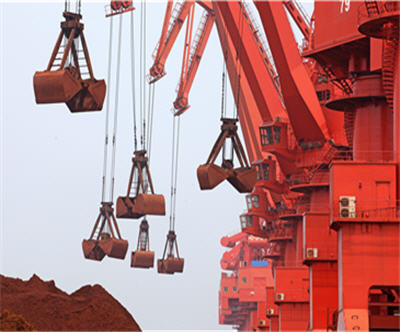
Benchmark iron ore fell more than 1% on Thursday to its lowest level since September 2012 when the steelmaking raw material briefly traded below $100 a tonne.
According to data from the The Steel Index, the import price of 62% iron ore fines at China’s Tianjin port was pegged at $103.70 per tonne on Thursday, down 1.3% on the day.
Iron ore touched $87.50 in September 2012, but quickly recovered to end that year above $150. The commodity traded below today’s level for shorter than three weeks and apart from that quick gap down hasn’t traded below $100 at all since 2009.
The fall in the price of iron ore came despite trade data showing a 12.7% rise in Chinese imports in April.
China, responsible for two-thirds of the 1.2 billion tonne seaborne trade, imported 83.39 million tonnes of iron ore in April, the second highest monthly figure.
The primary reason for the disconnect is that stockpiles at the country’s ports are rising even more rapidly than imports indicating still weak end demand.
Inventories have surged 25% so far this year and now sit at just under 110 million tonnes.
Another factor pushing the price lower is Beijing’s crackdown on the country’s vast shadow banking system.
It’s common practice in credit-scarce China for commodity traders and industries to use metals and ore as collateral for short-term financing deals.
Some estimates put the portion of iron ore inventories that is used for trade credit at 40%.
Now that Beijing’s crackdown coupled with a weakening yuan – another deliberate move by authorities – are pushing these deals under water, much of that ore could find its way back onto the market creating a vicious circle.
China forges as much steel as the rest of the world combined and a slowdown in the world’s second largest economy – particularly the property sector that accounts for almost half of all steel demand – has the seen iron ore price decline 22.7% in 2014.
Apart from moderating demand from China, another factor pushing down the price of iron ore is the prospect of a huge ramp up in global output.
BHP Billiton, Fortescue Metals Group and Rio Tinto are targeting an additional 170 million tonnes in Australia in 2014, while Vale wants to grow from just over 300 million tonnes per year in 2013 to over 400 million tonnes by 2018.